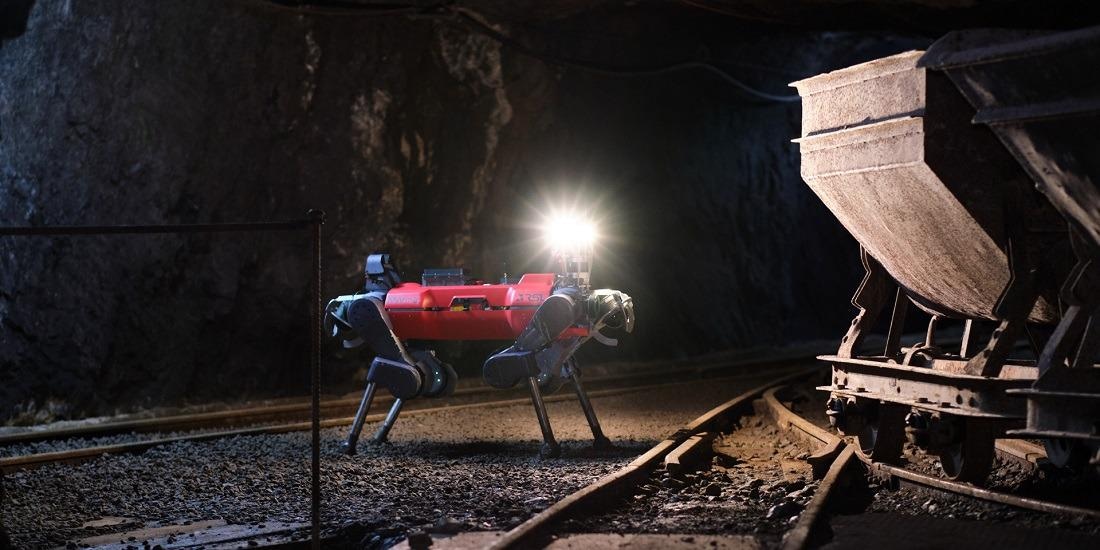Recently, team CERBERUS guided by a Norwegian University of Science and Technology professor won a highly esteemed competition for subterranean robots. MIT and NASA were also participants in the event.
 Team CERBERUS used several robots in the competition. The robot pictured was developed at ETH Zurich and was key to the team’s victory. Image Credit: Team CERBERUS
Team CERBERUS used several robots in the competition. The robot pictured was developed at ETH Zurich and was key to the team’s victory. Image Credit: Team CERBERUS
The competition hosted by the U.S. Defense Advanced Research Projects Agency (DARPA) Subterranean Challenge required teams to build state-of-the-art robots that can explore a wide range of subterranean environments. This competition was aimed to challenge and push earlier technological limits. The winning team would take home $2,000,000.
This [award] still feels absolutely incredible for us. We wanted to do well, but it’s hard to believe that we actually won.
Kostas Alexis, Professor, Department of Engineering Cybernetics, Norwegian University of Science and Technology
Professor Alexis was supported by DARPA to take part in the project while he was still affiliated with the University of Nevada, Reno.
International Collaboration Key
Professor Alexis led team CERBERUS, but the victory is evidently the result of global partnership. Participants of team CERBERUS were from well-respected research establishments in various countries.
The other team members are Professor Eelke Folmer from the University of Nevada, Reno; Professors Marco Hutter and Roland Siegwart from ETH Zurich; Adrien Briod from Flyability; Professor Maurice Fallon from the University of Oxford; Professor Mark Mueller from the University of California, Berkeley; and several leaders from the Sierra Nevada Corporation.
The level of competition was extremely high, which is expected based on the list of competitors facing Team CERBERUS. Other participants who made it to the final round of the DARPA Subterranean Challenge were from NASA Jet Propulsion Laboratory and MIT, CSIRO and the Georgia Institute of Technology, Carnegie Mellon University and the University of Colorado.
Navigated Underground
In the competition’s final round, the robots had to travel around underground tunnels, find objects and provide data on the site.
All of the competition occurred in passages that imitated both artificial underground systems and natural cave passages. The robots also had to handle additional challenges such as smoke and rough topography.
A Three-Year Effort
This was the most labour-intensive project I’ve ever been involved in. We were constantly developing ideas and working across multiple research environments and geography.
Kostas Alexis, Professor, Department of Engineering Cybernetics, Norwegian University of Science and Technology
The prize is not a big feather in NTNU’s cap. The completion of the project took three whole years. During that time, team CERBERUS built a whole collection of robots, both aerial and legged, that can explore diverse underground settings. The team had to meet the requirements for the final round which happened last week.
Advantages for NTNU
The prize is not surprisingly a big feather in the cap for NTNU’s Department of Engineering Cybernetics (ITK), the UAV lab at ITK and NTNU.
Lars Struen Imsland, Head of Engineering Cybernetics Department, Norwegian University of Science and Technology
The event is perhaps the most respected and noteworthy competition in autonomous systems and robotics.
The fact that the leader of the team that won is with us at NTNU gives us great visibility in the foremost arena in this field. It will help attract students, researchers, new projects, and more. Going forward, the prize will provide new opportunities, for example in combination with underwater robotics, where we’re already very strong.
Lars Struen Imsland, Head of Engineering Cybernetics Department, Norwegian University of Science and Technology
Autonomous Teamed Exploration of Subterranean Environments using Legged and Aerial Robots
Here’s a video of the Team Cerberus robot during the competition finals. (Vide Credit: Team CERBERUS)